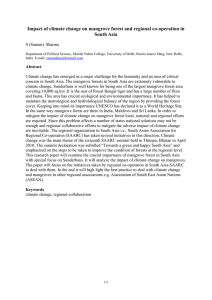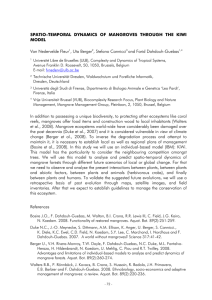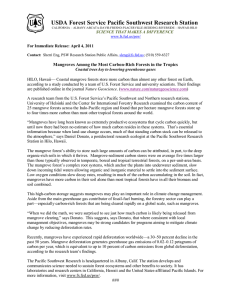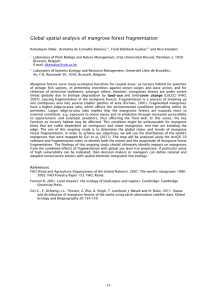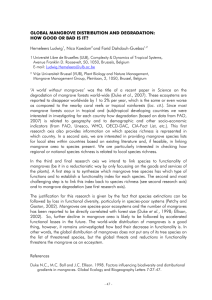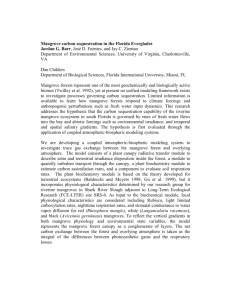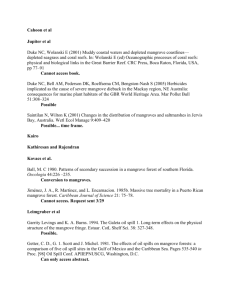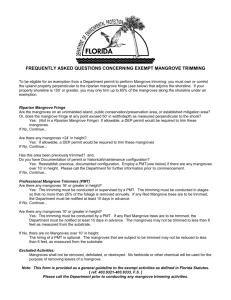The deep, soft and sticky mud, dense curious shaped above ground
advertisement
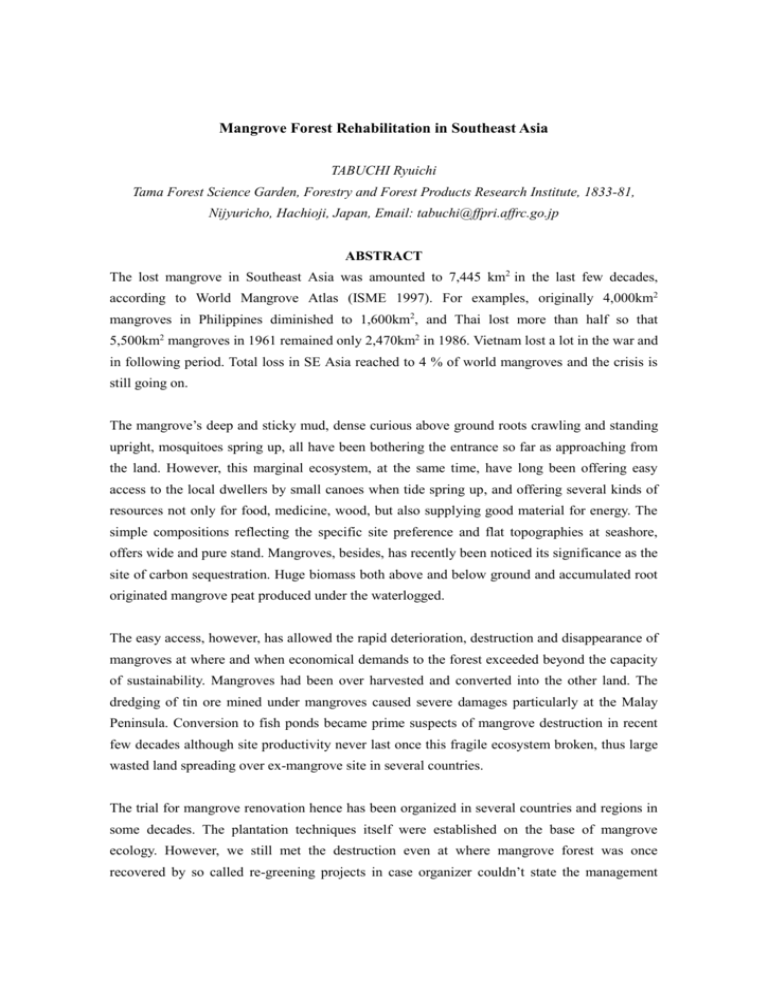
Mangrove Forest Rehabilitation in Southeast Asia TABUCHI Ryuichi Tama Forest Science Garden, Forestry and Forest Products Research Institute, 1833-81, Nijyuricho, Hachioji, Japan, Email: tabuchi@ffpri.affrc.go.jp ABSTRACT The lost mangrove in Southeast Asia was amounted to 7,445 km2 in the last few decades, according to World Mangrove Atlas (ISME 1997). For examples, originally 4,000km2 mangroves in Philippines diminished to 1,600km2, and Thai lost more than half so that 5,500km2 mangroves in 1961 remained only 2,470km2 in 1986. Vietnam lost a lot in the war and in following period. Total loss in SE Asia reached to 4 % of world mangroves and the crisis is still going on. The mangrove’s deep and sticky mud, dense curious above ground roots crawling and standing upright, mosquitoes spring up, all have been bothering the entrance so far as approaching from the land. However, this marginal ecosystem, at the same time, have long been offering easy access to the local dwellers by small canoes when tide spring up, and offering several kinds of resources not only for food, medicine, wood, but also supplying good material for energy. The simple compositions reflecting the specific site preference and flat topographies at seashore, offers wide and pure stand. Mangroves, besides, has recently been noticed its significance as the site of carbon sequestration. Huge biomass both above and below ground and accumulated root originated mangrove peat produced under the waterlogged. The easy access, however, has allowed the rapid deterioration, destruction and disappearance of mangroves at where and when economical demands to the forest exceeded beyond the capacity of sustainability. Mangroves had been over harvested and converted into the other land. The dredging of tin ore mined under mangroves caused severe damages particularly at the Malay Peninsula. Conversion to fish ponds became prime suspects of mangrove destruction in recent few decades although site productivity never last once this fragile ecosystem broken, thus large wasted land spreading over ex-mangrove site in several countries. The trial for mangrove renovation hence has been organized in several countries and regions in some decades. The plantation techniques itself were established on the base of mangrove ecology. However, we still met the destruction even at where mangrove forest was once recovered by so called re-greening projects in case organizer couldn’t state the management plan. It depends on how we can create the sustainable incentives in any manner e.g. producing wood as charcoal material, as fishery site, or even as the site of eco tourism, with mangroves keep being mangrove. We must study how to utilize mangrove wisely in the form of forest again.

